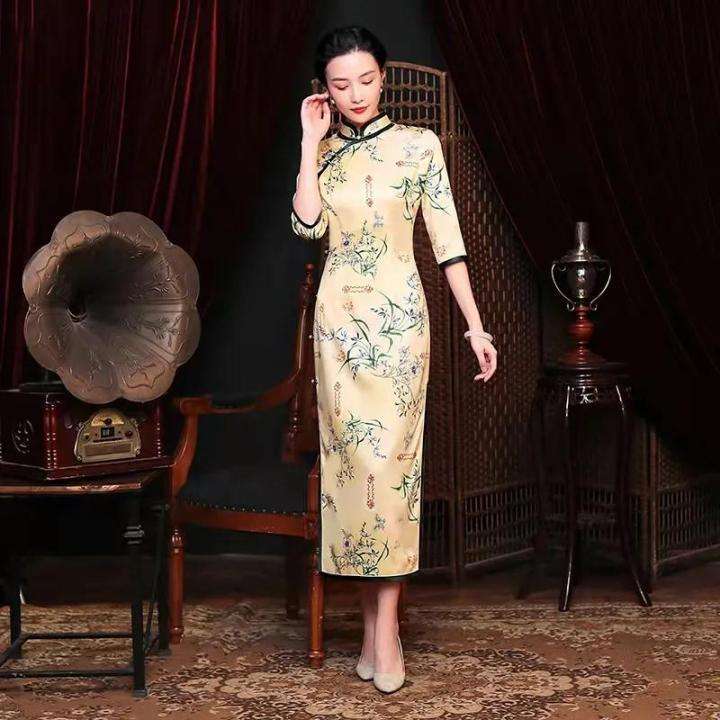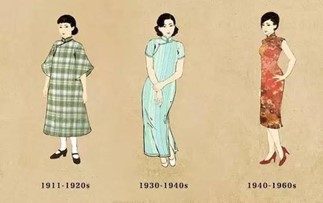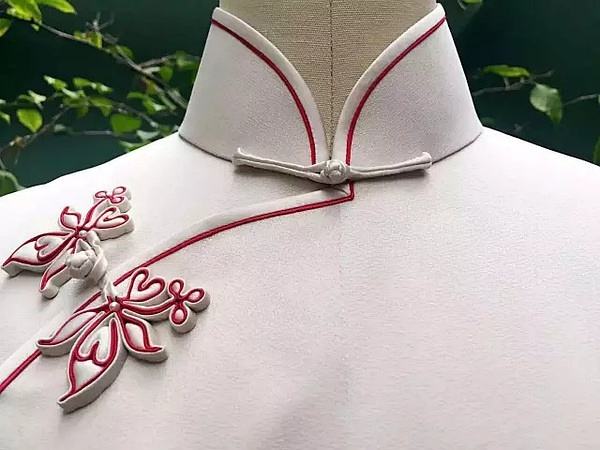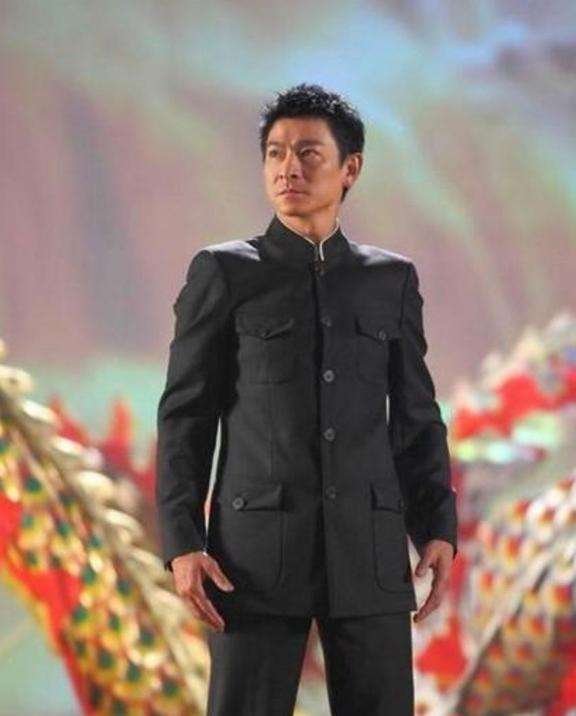【中国剪影·Glance at China】-001
旗袍和中山装
Qipao and Zhongshan suit
一、 旗袍 Qipao
旗袍是什么?
What is Qipao?
旗袍是一种贴身、高领,两边有开衩的连衣裙。早期的旗袍包裹全身,长度到脚,有着又高又紧的衣领,形态宽松,两边的开衩仅仅是为了方便行动。
Qipao or cheongsam, a close- fitting woman’s dress with high neck and slit skirt. The general characteristics of the early Qipao were a single piece of cloth that would cover the whole body, down to the feet. Around the neck, the collar would be high to help secure outfit. The materials were loose, with slits on the side only allow for easier movement.

旗袍的改进
The Improvement of Qipao
到了20世纪20年代末,人们的服装受到了欧美的影响,旗袍的样式也发生了显著的变化。我们今天最常见的旗袍是这样的:优美合身,短袖,裙边两条高开衩不仅方便行动,而且完美的展现了女性纤细的腿部线条。现代改良的旗袍因凸显女性身材美而引人瞩目。
By the end of the 1920s, dressing style was affected by that of Europe and America. The pattern of Qipao was changed significantly. The most common Qipao we see today: slender fit and shorter sleeves, with two long slits at each side of the hem, for convenient movement, but now wonderfully display the slender legs of women. The modernized version is noted for accentuating the figures of women.

Key words:
1. 旗袍(qí páo): a close- fitting woman’s dress with high neck and slit skirt.
2. 连衣裙(lián yī qún): a dress
3. 身材(shēn cái): figure, the shape of your body.
Supplement:
盘扣:是一种源自于中国的纽扣,纽扣用丝线做成,用来固定衣领或者作为一种装饰。盘扣也被广泛的用在装饰旗袍上。
盘扣 (pán kòu) Frog Button: it’s a kind of button originated from China, the button is made of silk thread and has been used to fix the collar or a decoration to the fashionable cloth. It is widely used on Qipao.

二、 中山装 Zhongshan suit
中山装是什么?
What is Zhongshan suit?
中山装也被称作毛装,起初是被1911辛亥革命领导人孙中山先生所引入的。伴随着中华人民共和国的成立,毛泽东主席将着装推广,因此这套衣服在西方也被称作“毛装”。
The Zhongshan suit, which is also known as the Mao suit, was first introduced by Sun Yat-sen, the leader of China’s 1911 Revolution. Chairman Mao Zedong later popularized the suit following the founding of the People’s Republic of China, so the garment became known in the West as “Mao suit”.
一套典型的中山装会有四个前口袋以及轮廓鲜明的衣领。中山装有着笔直的翻领并且紧贴脖颈,这一点暗示了中国人注重细节和精准的特性,恰恰也符合现代中国的文化特征。中山装前襟的四个前口袋代表礼、义、廉、耻。衣服的中部有五颗扣子,代表着五权分立。三颗袖扣代表三民主义即民族、民权、民生。
A classic Zhongshan suit is known for its four front pockets and clean-cut collar. In line with its cultural significance in modern China, the suit has a vertical lapel that should always be fastened tightly to indicate the attention to detail and precision of the Chinese people. The four front pockets are said to symbolize the sense of propriety, justice, honesty and honor of the Chinese. There are five buttons in the center, representing the five branches of government in the constitution of the Republic of China. Three cuff buttons stand for Sun’s Three Principles of the People: Nationalism, Democracy and the People’s Livelihood.
蜕变成新时尚
A transition to new fashion
伴随着新中国的成立,政府官员开始紧跟毛主席的风向标,将中山装作为重要场合的官方衣着,大众也紧随其后。从1920年到1980年灰色和蓝色服饰是男士服饰的主要颜色,也是中国男士唯一的选择。随着1970改革开放以来,中国人在服饰方面有了更多的选择。中山装逐渐失去了它的主导地位而被西方潮流服饰以及日常便装所取代。
Following the founding of New China, government officials followed Mao’s lead and regarded the Zhongshan suit as an official dress for important occasions, and the public soon followed. The gray and blue suit dominated local menswear from 1920 to 1980. It was the only choice for Chinese men. With the country’s reform and opening-up from the late 1970s, Chinese people had more choices in clothing. The Zhongshan suit gradually lost its large following and was replaced by Western-style suits and more casual attire.

但是随着国家的富强以及在国际上的影响力增强,越来越多的人回归中国文化和中山装。
But with the country growing in importance and influence on the international stage, more people are returning to Chinese culture and the Zhongshan suit.
一些人,特别是一些名人和年轻人现在特别喜欢中山装,因为它可以彰显自己的个性。更加大胆的颜色如红色,黄色和白色都在被大家所接受。一些装饰,包括龙,凤凰以及牡丹花也被绣在了衣服上。衣服口袋向里叠,衣物材质的选择也因不同的设计风格而不同。为了满足人们的需求,腰线也从传统的笔直风格而变成了更加的修身,以此显得更加时尚。
Some people, especially celebrities and youngsters, are in favor of Zhongshan suits that show more individuality. Bold colors such as red, yellow and white are being used. Some additions, including dragon, phoenix and peony motifs, are embroidered on the suits. The pockets are folded inside and the fabric choices are more varied to expand the scope of the design. To meet some people’s need, the waistline, which is traditionally straight, now can be slimmer to be more fashionable.
Key words:
1. 中山装(Zhōnɡ shān zhuāng): Zhongshan suit
2. 辛亥革命(xīn hài ɡé mìnɡ): China’s Revolution of 1911
3. 改革开放(ɡǎi ɡé kāi fànɡ): reform and opening-up
4. 主席(zhǔ xí): chairman
Supplement:
孙中山:孙中山1866年12月出生于广东省广。在他的哥哥资助下,他求学香港、随后又留学美国和日本。国家的逐渐败落,让他燃起了救国之举,因此组织了1911年辛亥革命,最终推翻了清朝政府,建立中国历史上第一个共和国——中华民国。
孙中山Sun Yat-sen: Sun was born in November 12, 1866, he is from Guangdong province. Funded by the brother, he was a student in Hongkong, the United States, Japan. Unbearable to the decline of his country, Sun has organized 1911 uprising, finally succeeded in overthrowing the Qing government, established the first Republic, the Republic of China.